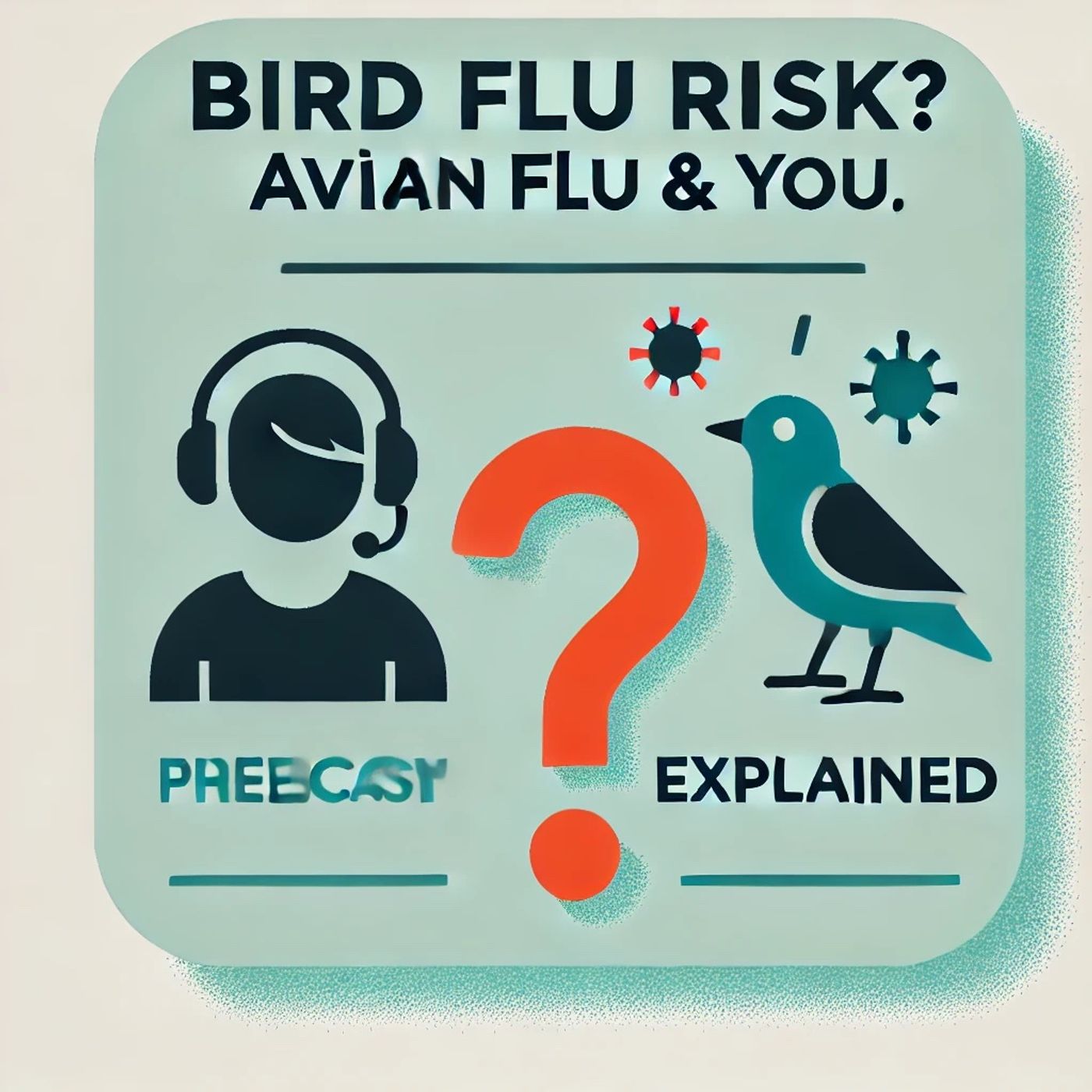Podcast Episode Details
Back to Podcast Episodes
Bird Flu 2025: Your Essential Guide to Understanding Risk Levels and Staying Safe in the Current Outbreak
Welcome to Bird Flu Risk? Avian Flu & You, Explained—your personalized guide to understanding your real risk from avian flu here in August 2025.
Let’s start with a simple fact: for most people, the current risk of bird flu—specifically H5N1—is low. Cases among humans are extremely rare and almost always linked to direct contact with infected birds or other animals, not through everyday life or casual community exposure. That said, it helps to know where you stand.
First, let’s break down risk factors:
By Occupation, your risk goes up if you work closely with birds, poultry, or dairy cattle—think poultry or dairy farm workers, slaughterhouse workers, veterinarians, zookeepers, and anyone handling raw animal products or involved in animal health response. If this is your job, exposure to sick or dead animals, their droppings, or untreated animal products means you should take extra precautions like personal protective equipment, strict hand washing, and following workplace safety protocols.
Location matters, too. People living or working near active poultry or dairy operations, especially areas with recent outbreaks, face greater risk. If you’re in an urban setting with little animal contact, your risk is essentially negligible right now.
By Age, older adults are more likely to have severe illness if infected, while infants and young children—so far—appear at lower risk but should still avoid exposure to live or sick poultry and their environments.
Your Health Status plays a role: people with weakened immune systems or chronic conditions should be especially cautious around animals known to be infected, and alert healthcare providers quickly if they develop flulike symptoms after potential exposure.
Let’s walk through a quick risk calculator:
Scenario one—if you’re a city office worker with no animal contact, your risk is practically zero. You don’t need to change daily routines or worry at this time.
Scenario two—if you work on a poultry or dairy farm, your risk is higher, especially if you handle sick animals. Wear your protective gear, report exposures, and follow workplace safety rules.
Scenario three—if you’re a backyard chicken owner or join birdwatching groups, your risk is higher than the general public. Wash your hands, use gloves, and avoid contact with sick or dead birds.
For high-risk listeners, like farm workers and animal health responders: Wear all recommended protective equipment, don’t touch dead or sick animals bare-handed, and seek medical care if you get a fever or respiratory symptoms after exposure.
For most people, no need to worry. Don’t let headlines stress you—bird flu isn’t circulating in communities and isn’t spread through fully cooked poultry, eggs, or dairy. Cook poultry and eggs thoroughly, avoid raw milk, and you’re safe.
Your decision-making framework: if your job or hobby involves animals, use protective measures and monitor your health. If not, routine hygiene is enough.
Be vigilant if you have occupational exposure or learn of outbreaks in your area. Low-risk individuals should stay informed but go about life as usual.
Thanks for tuning in to Bird Flu Risk? Avian Flu & You, Explained. This has been a Quiet Please production. For more, check out quietplease.ai. Come back next week to stay informed and empowered.
For more http://www.quietplease.ai
Get the best deals https://amzn.to/3ODvOta
Published on 2 weeks, 3 days ago